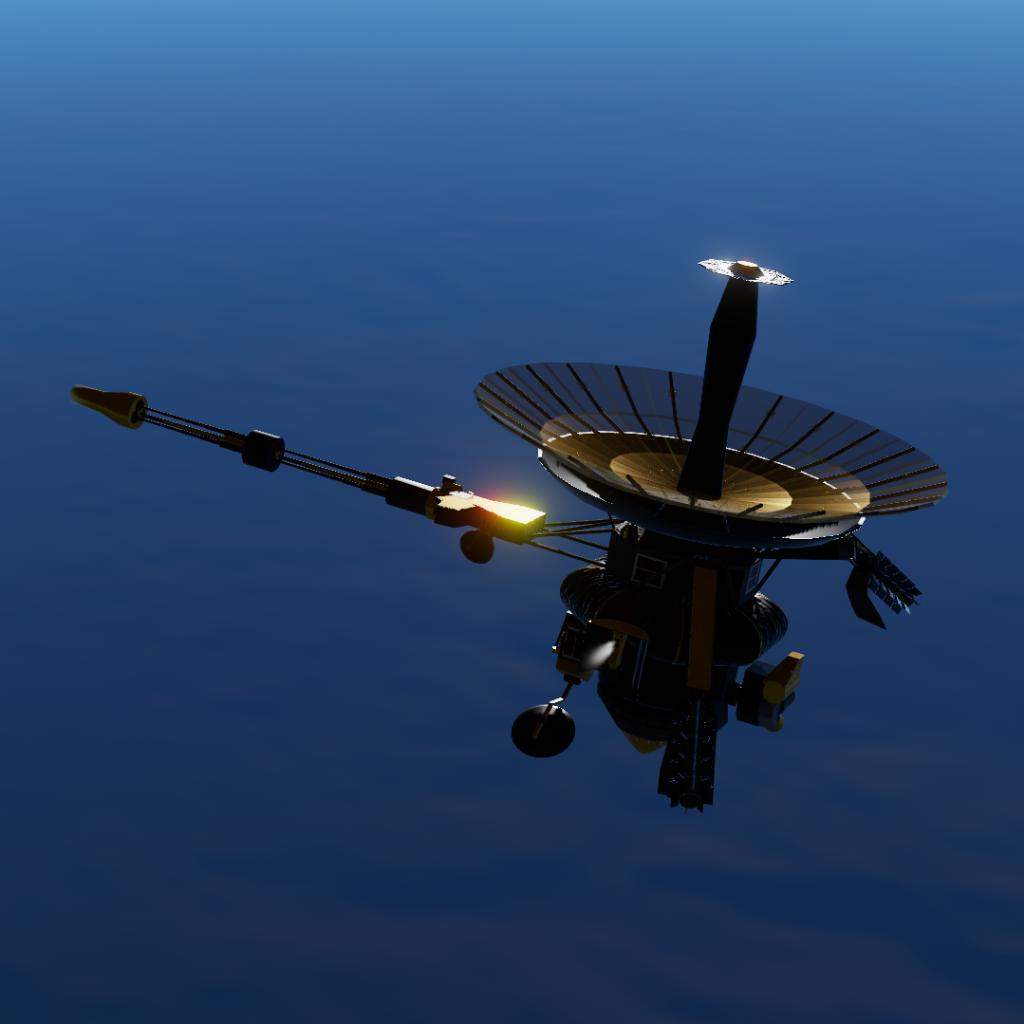Shuttle Craft by Seraku and LonelySpaceGuy
Parabolic Antenna by 2511827356
STS-34...
...launched on October 18th, 1989 and was the second mission out of three interplanetary missions NASA would conduct using their fleet of Space Shuttles, this time carrying the Jupiter-bound spacecraft dubbed "Galileo" on Space Shuttle Atlantis.
Named after the Italian astronomer Galileo Galilei, the entire spacecraft consisted of an orbiter and an entry probe. One section of the spacecraft rotated at 3 revolutions per minute, keeping Galileo stable and holding six instruments that gathered data from many different directions, including the fields and particles instruments.
After surviving would-be mission catastrophes, executing numerous gravity-assists, and even witnessing a comet collide into Jupiter, Galileo entered the Jovian system on December 7th, 1995, where it would deploy its atmospheric probe into Jupiter’s atmosphere, study its moons, and conduct science. Galileo would meet its end on September 20th, 2003, where it would be commanded to vaporize upon atmospheric entry into Jupiter.
Thirteen years after Galileo’s end, the next spacecraft to visit the Jovian system would be none other than Juno.
INSTRUCTIONS FOR DEPLOYING PAYLOAD


1. Switch to Galileo's command chip, activate AG9, and set slider 1 all the way UP. (I recommend to keep it there since some instrumentation needs it there to stay deployed)
2. Activate and deactivate AG10 to release the payload.
3. Reactivate AG10 to translate forward using RCS.
4. Plan a burn to place the spacecraft on a transfer orbit to your interplanetary neighbor.
GENERAL INFO
- This craft has been featured
- Created On: Windows
- Game Version: 1.1.109.0
- Price: $2,092,573k
- Number of Parts: 2870
- Dimensions: 68 m x 38 m x 48 m
PERFORMANCE
- Total Delta V: 67.1km/s
- Total Thrust: 103.0MN
- Engines: 35
- Wet Mass: 6.05E+6kg
- Dry Mass: 3.71E+5kg
STAGES
| Stage | Engines | Delta V | Thrust | Burn | Mass |
|---|---|---|---|---|---|
| 1 | 6 | 411m/s | 7.1MN | 5.5m | 6.05E+6kg |
| 2 | 2 | 1.6km/s | 21.5MN | 84s | 1.58E+6kg |
| 3 | 0 | 0m/s | 0N | 0s | 7.19E+5kg |
| 4 | 2 | 38.6km/s | 866kN | 6.0m | 70,299kg |
| 5 | 4 | 26.5km/s | 58.7MN | 4s | 70,299kg |
10 Comments
- Log in to leave a comment
-
-
0 mexspace1.4 years ago
How do I make it disintegrate when entering the atmosphere or how do I increase the thermal resistance of all the parts without much effort?
-
-
7,477 csm1072.4 years ago
@dimondengineer Try changing the physics settings. Since the shuttle is extremely heavy, interstage connections are often finicky
-
-
-
-
-













@LockSource I have used your space shuttle and if you check my posts you can see I have made it updated from your space shuttle and I Thank you for letting me use your space shuttle it was so good you made a craft Like no other